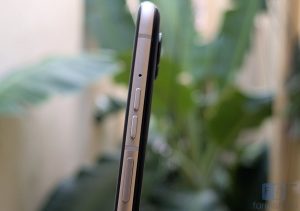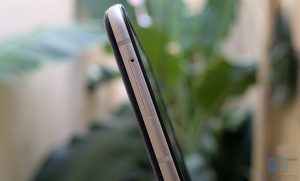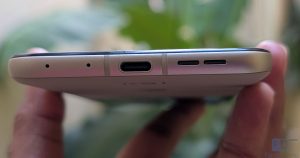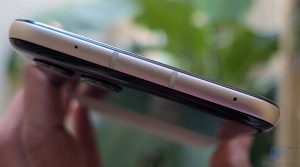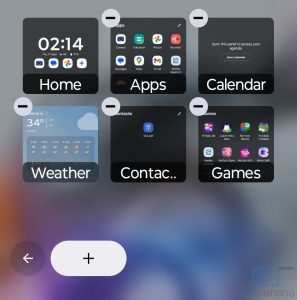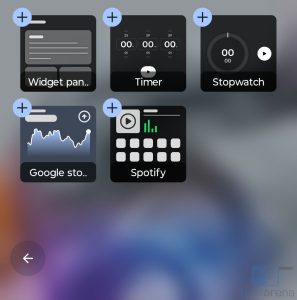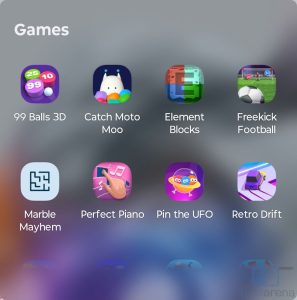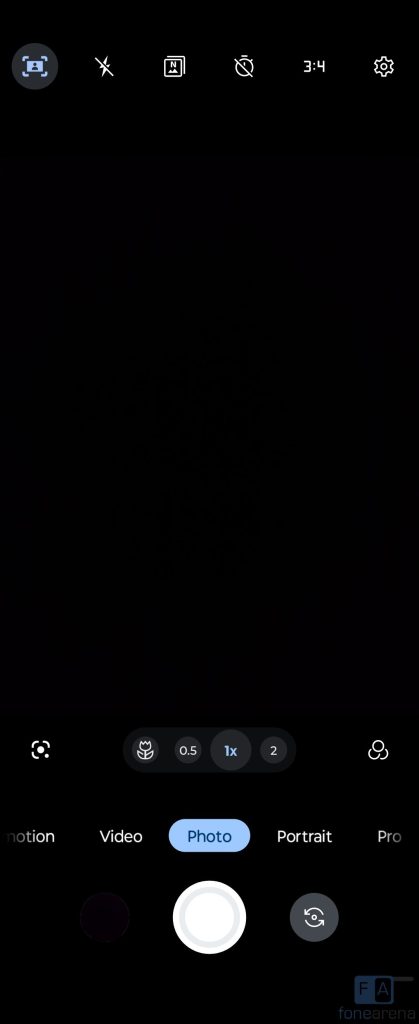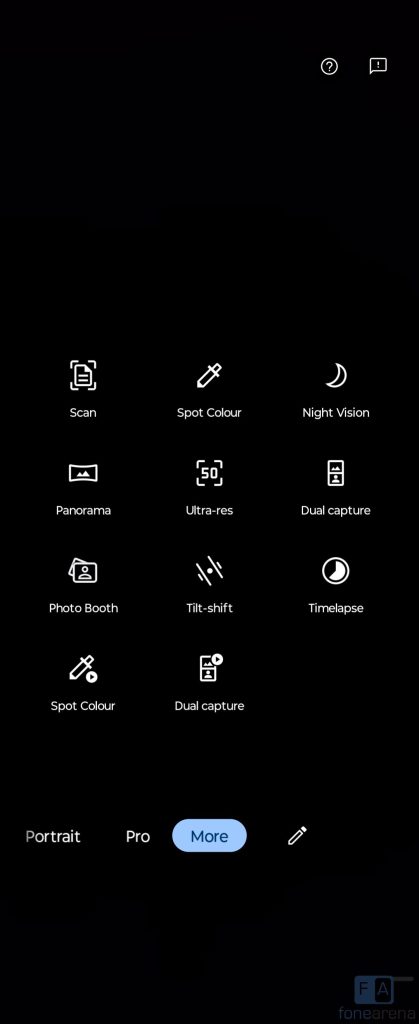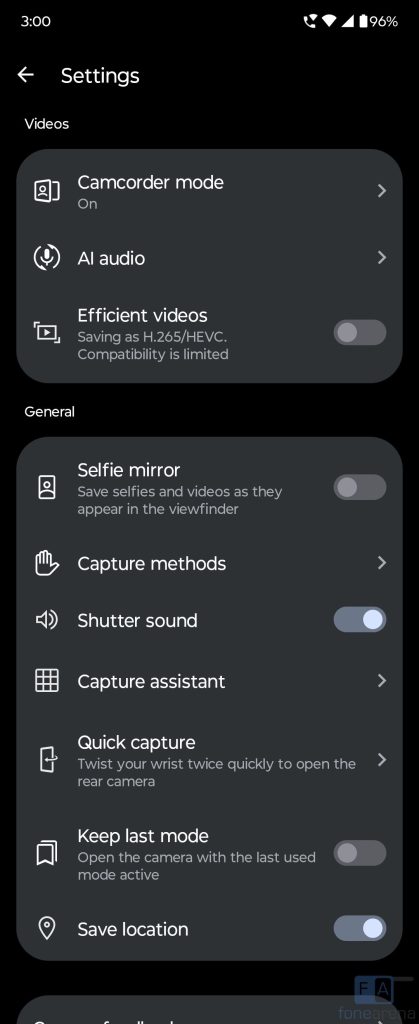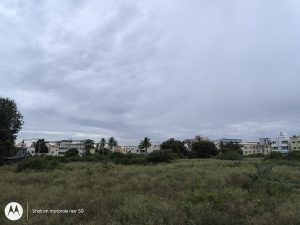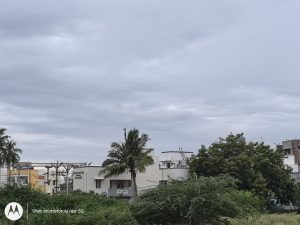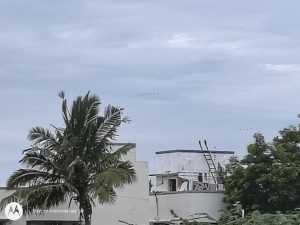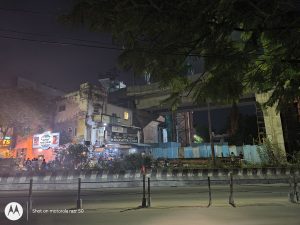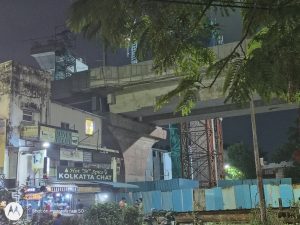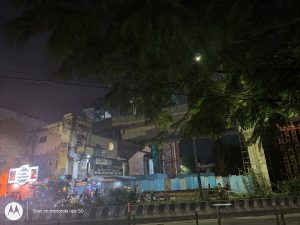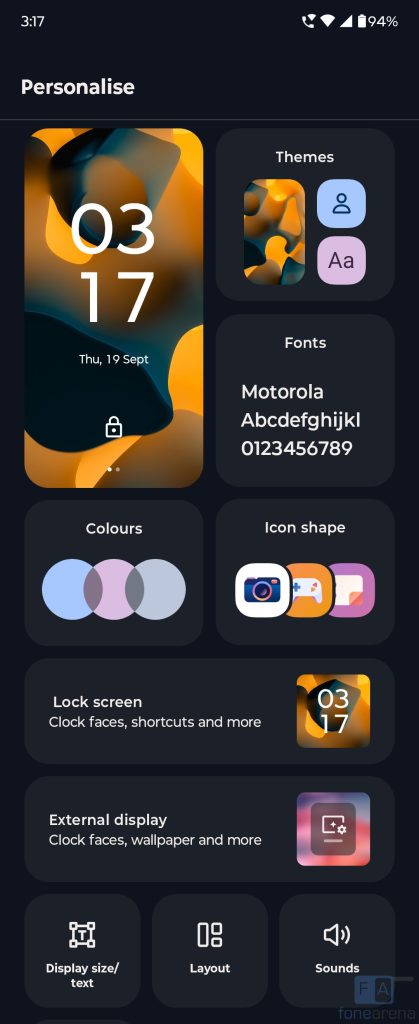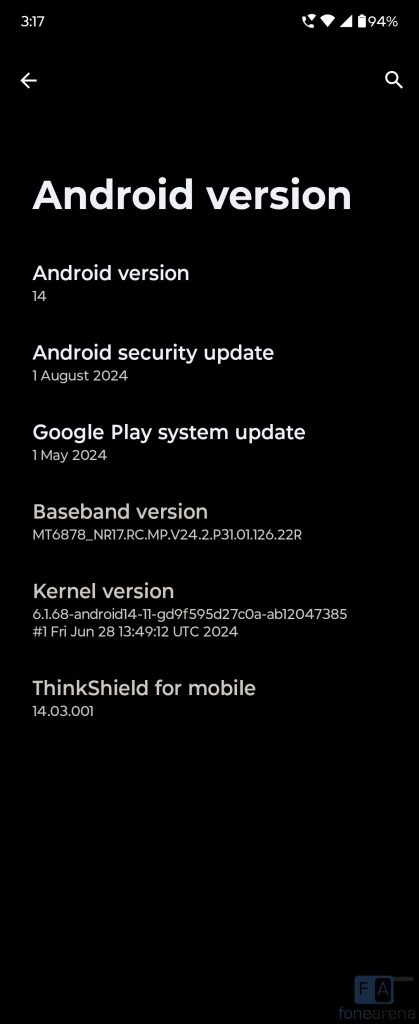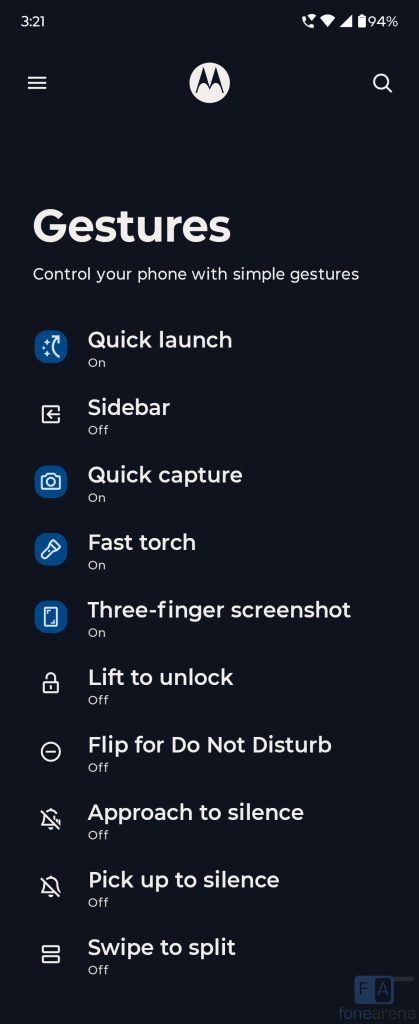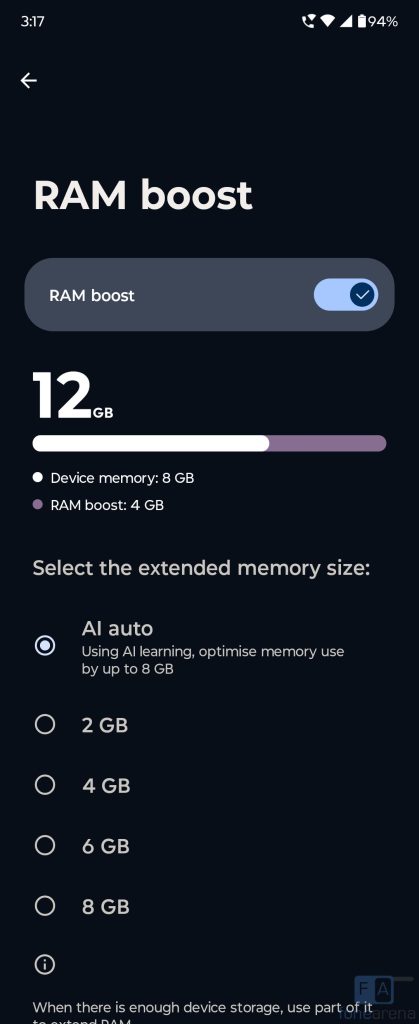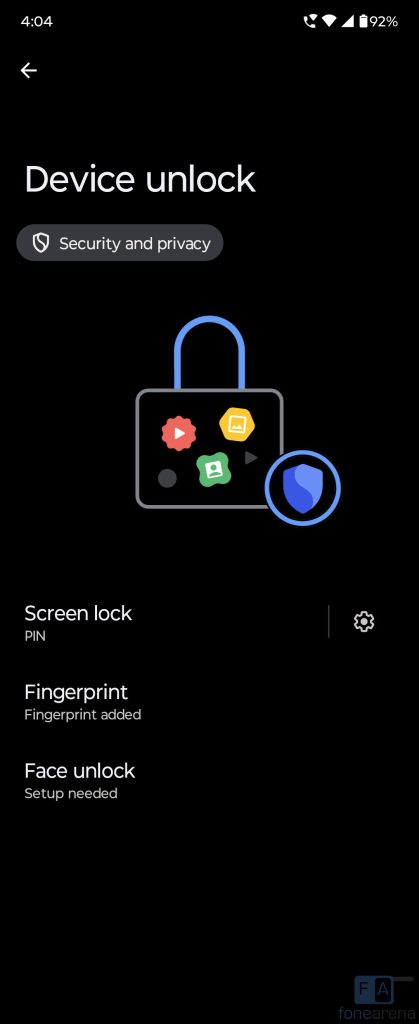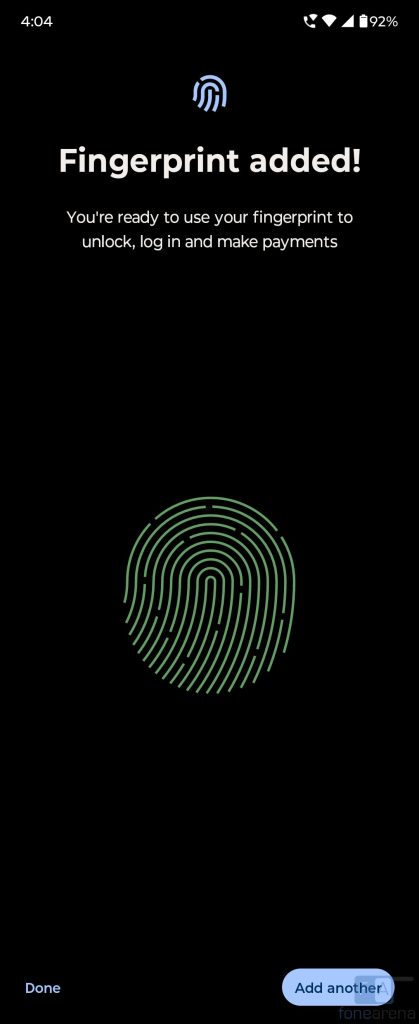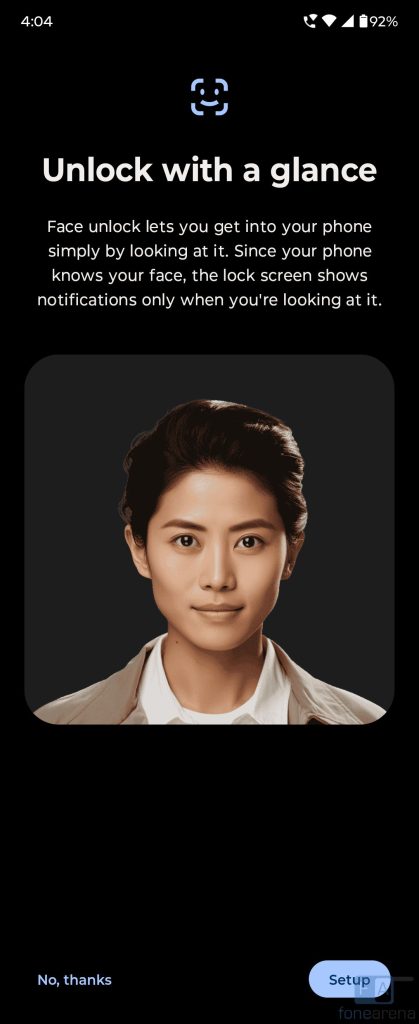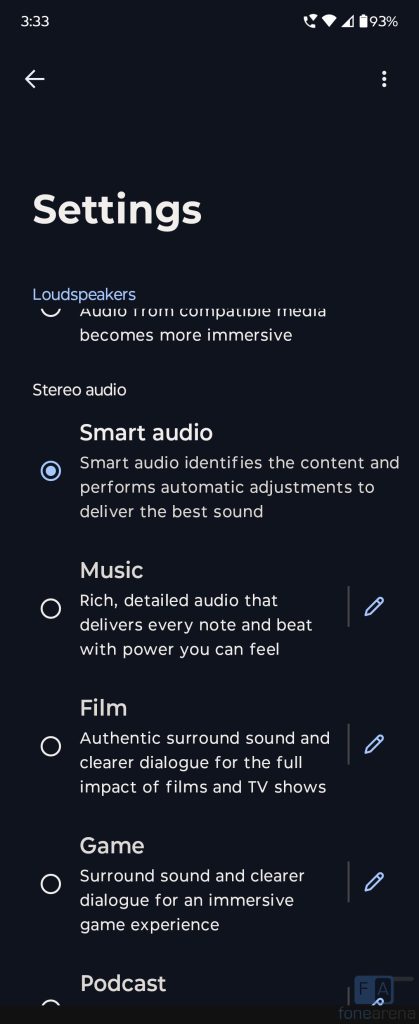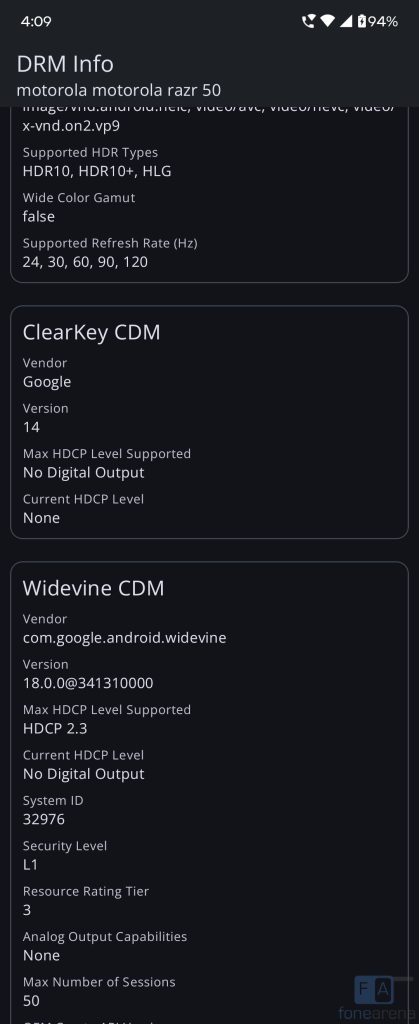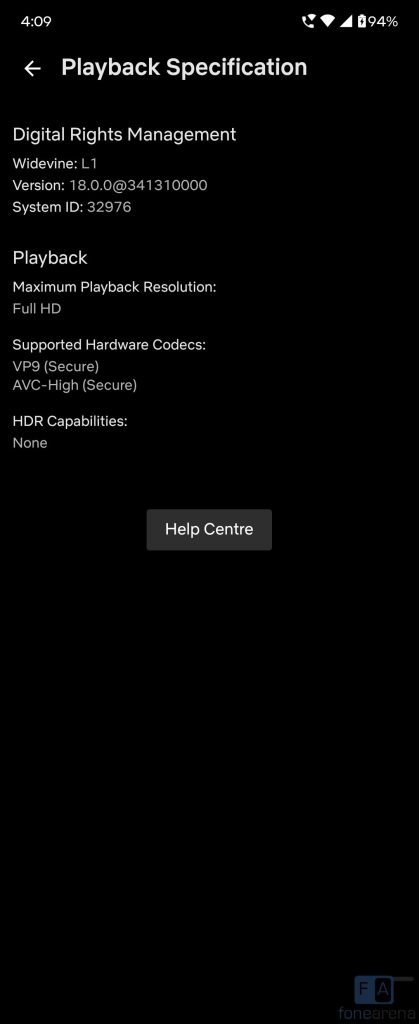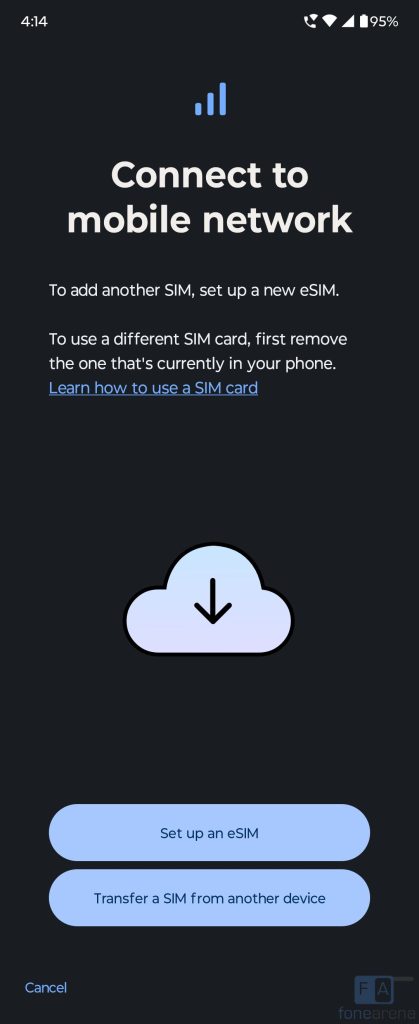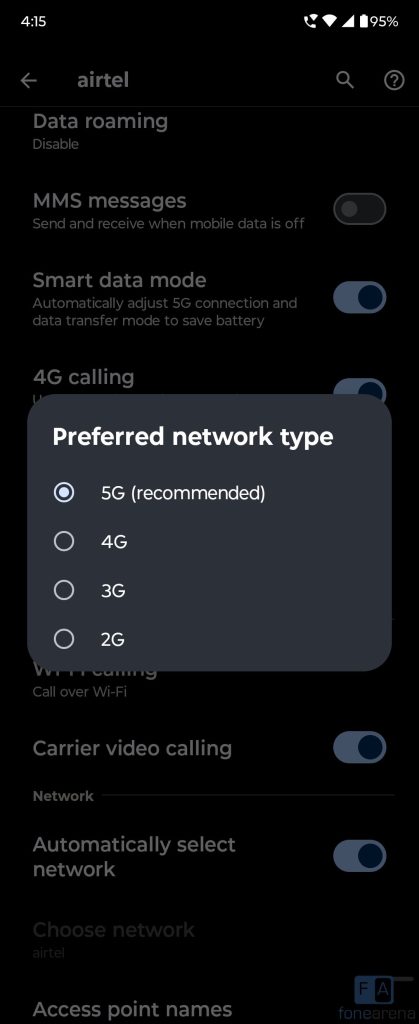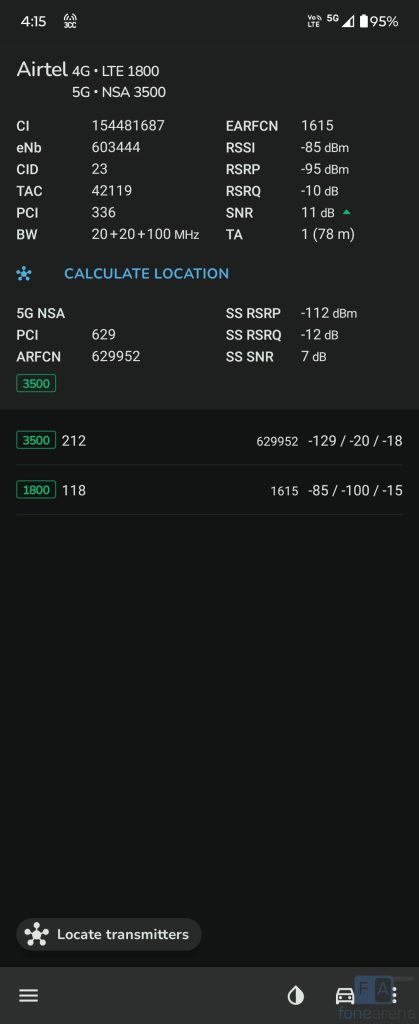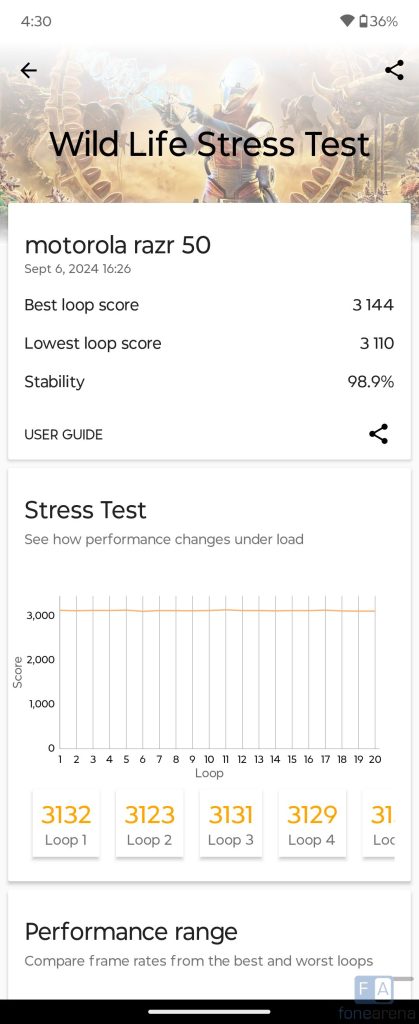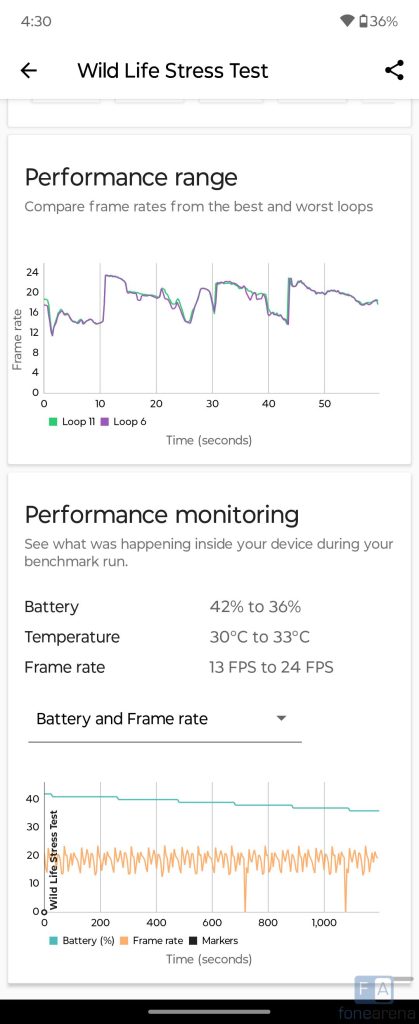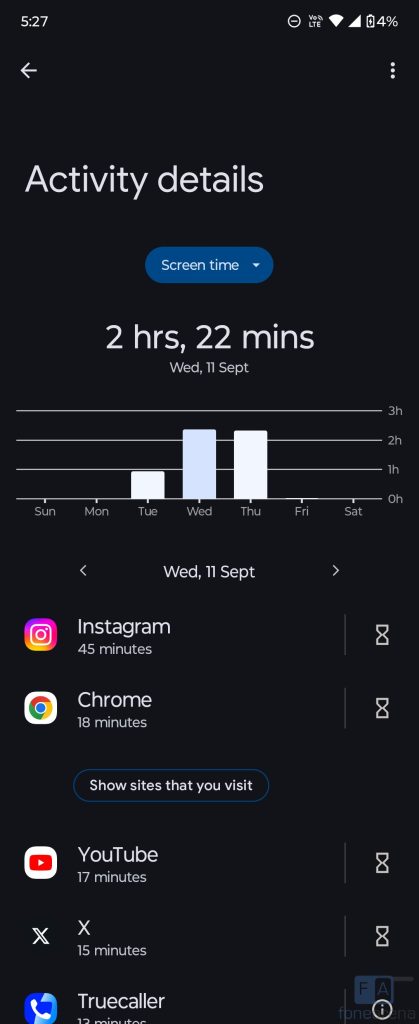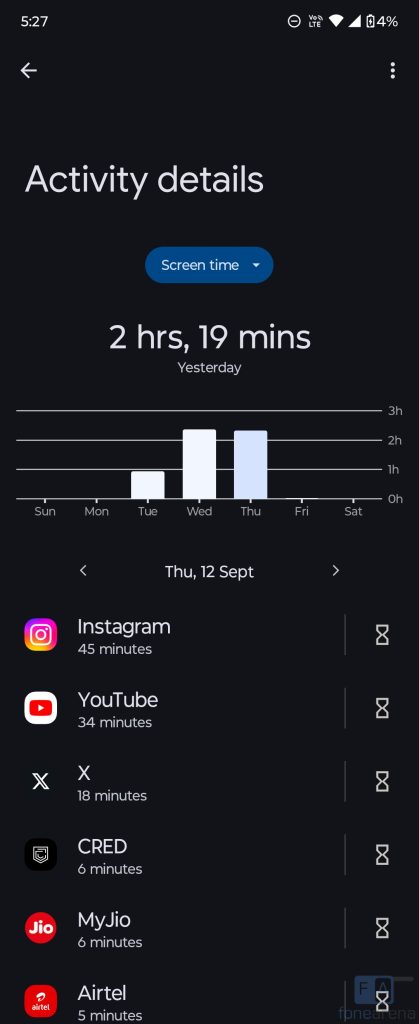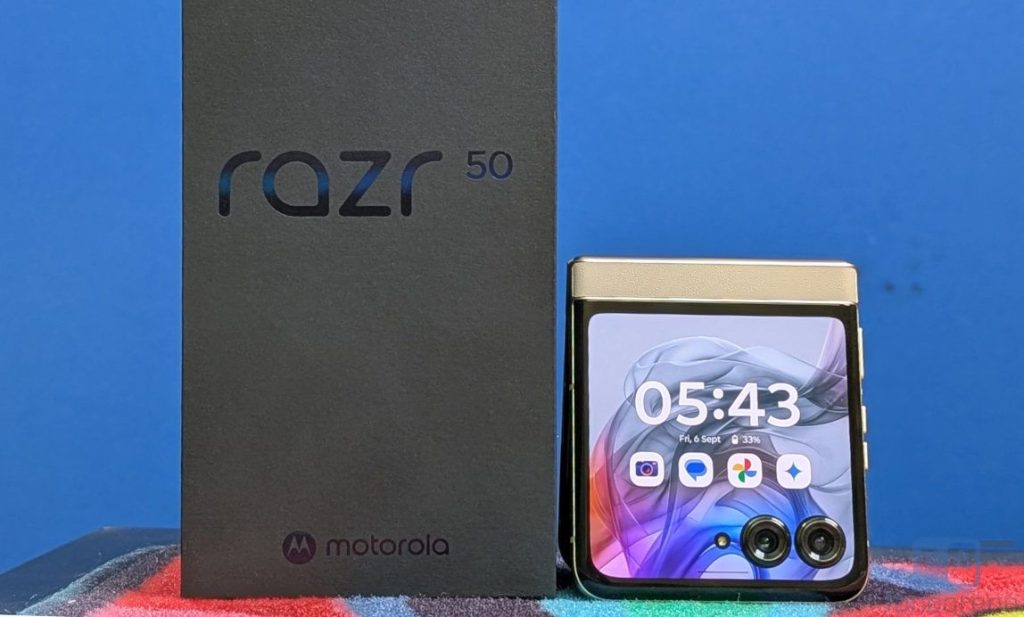
motorola launched the razr 50, the company’s latest foldable razr series smartphone, in India earlier this month. The successor to last year’s razr 40 get a bigger outer screen, faster processor, faster wireless charging and improved waterproof ratings. It this a good foldable phone for the price? Let us dive into the review to find out.
| Box Contents |
| Camera |
| Battery Life |
| Conclusion |
Box Contents
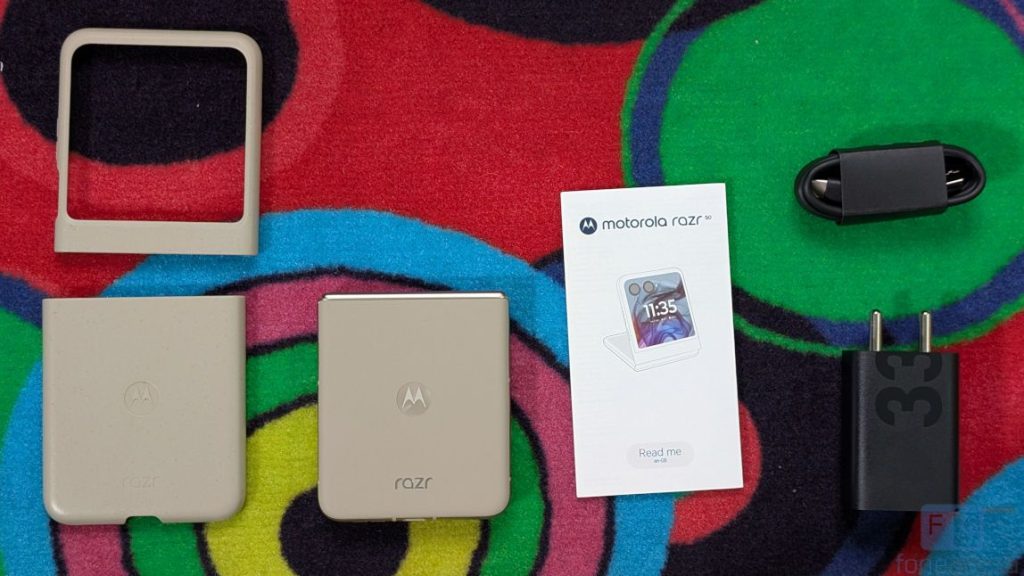
- motorola razr 50 8GB + 256GB model in Sand Beach colour
- 33W turbo charger
- USB Type-A to Type-C cable
- SIM Ejector tool
- Protective case
- User manual
Display, Hardware and Design
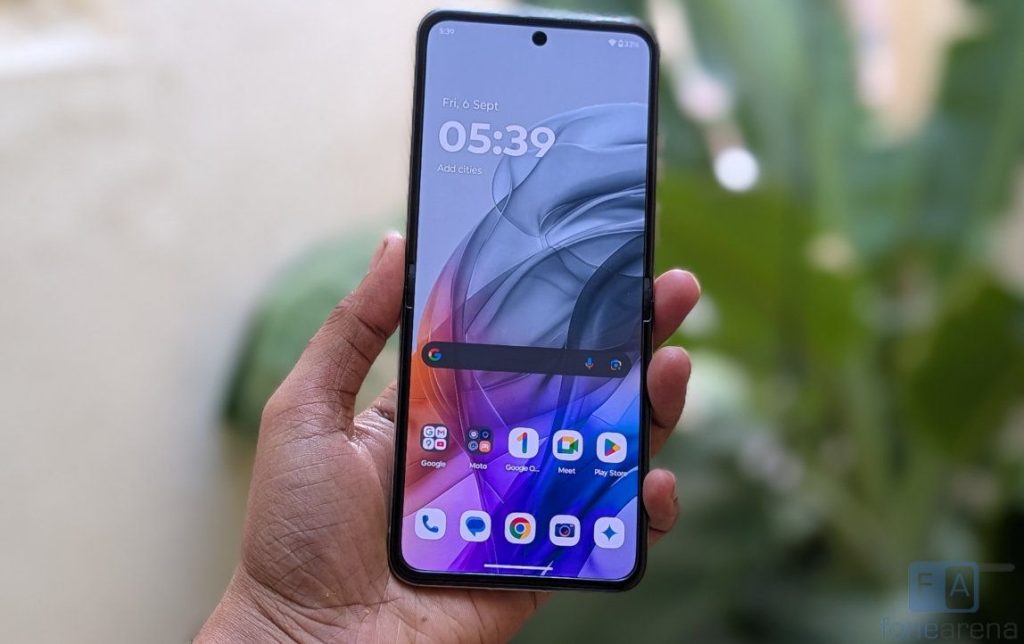
Starting with the display, the moto razr 50 features a large 6.9-inch Full HD+ 120Hz LTPO pOLED screen with a pixel resolution of 2640 x 1080 pixels, 22:9 aspect ratio and a pixel density of about 413 PPI.
The display is bright, since it has up to 3000 nits peak brightness, and the sunlight legibility is good as well. The colours are vibrant as well since it has 120% DCI-P3 color gamut. Even with a foldable screen, the crease is hardly visible, thanks to the enhanced hinge. During set up, motorola shows an alert asking not to remove the pre-installed screen protector or install third-party screen protector to the screen, doing so make the warranty void. This is also mentioned in a sticker on the phone.
The 1-120Hz LPTO variable refresh rate compared to 144Hz variable refresh rate in the razr 40 offers a fluid user experience. It has 220Hz/300Hz touch sampling rate in gaming mode. It also has HDR+ support, which works for YouTube, and Amazon Prime Video, but not for Netflix.
Under the display options there are different options to adjust colours from Natural, Radiant and Vivid colors. There is flicker prevention option in the settings. It doesn’t have notification LED, but there is Always on display.
The razr 50 has a 6000 series aluminum frame that is premium in looks and feel, and is solid to hold. The phone has a matte finish, and might be slipper at times. The volume rockers and the power button that houses the fingerprint scanner is present on the right side. The SIM slot is present on the left side. This has a single physical SIM and the secondary SIM is an eSIM.

The phone is just 7.25mm thick when open, compared to 7.35mm in the predecessor. It weighs 188 grams, same as the razr 40.
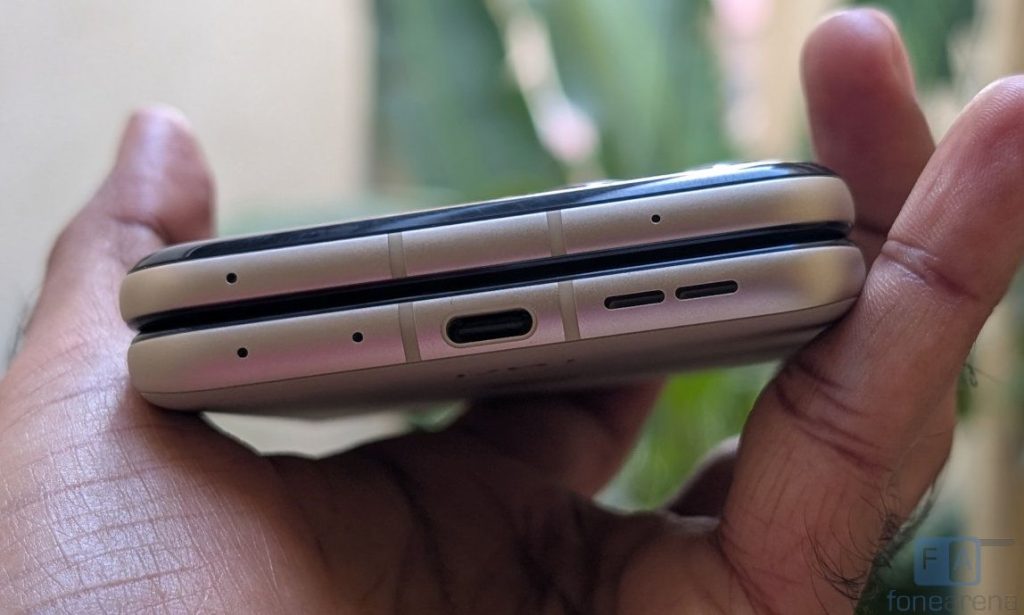
When closed, the phone is 15.85mm thick. The hinge feels sturdy and can be used in several angles, and the company says that it has been successfully tested for over 4 lakh folds. The phone has IPX8 ratings for water resistance. There are no gaps when closed.
The screen can stay stable at different angles, which is good. However, the hinge is sturdier in the Samsung Z Flip phones.
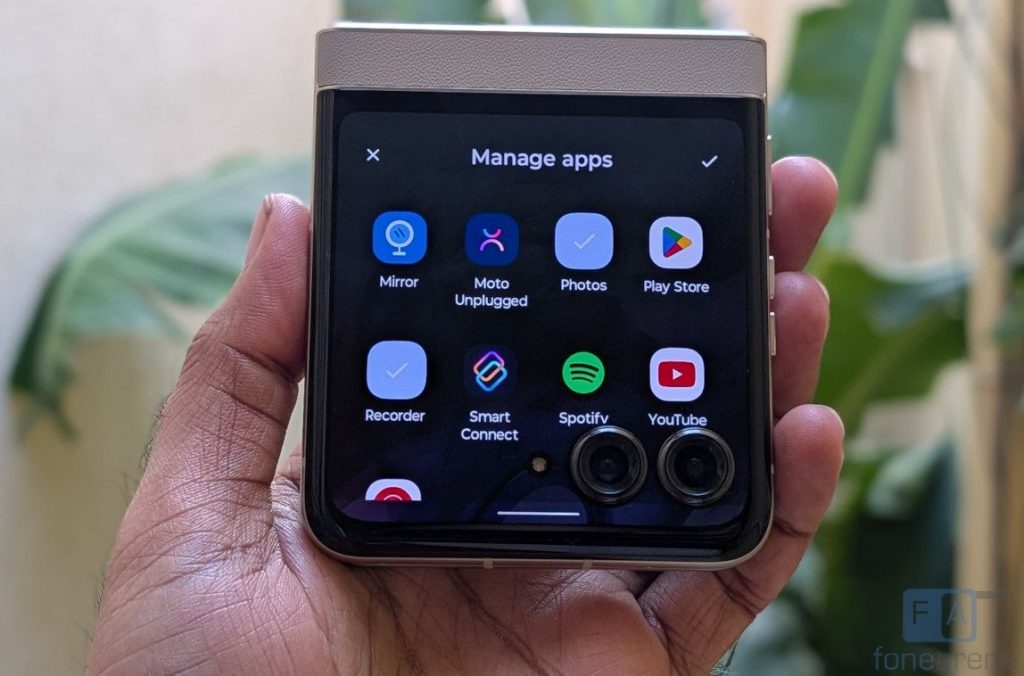
The front screen has been upgraded to 3.6-inches (1056 x 1066 pixel), making it way larger than the 1.47″ screen in the razr 40, and the pOLED display with 90Hz refresh rate is now brighter offering up to 1700 nits peak brightness compared to 1000 nits in the predecessor. This has Corning Gorilla Glass Victus protection.
Unlike other flip phones, you can use any app on the outer screen, but all the apps might not be optimized. You can add Stocks, Spotify, and more widgets, in addition to the existing widgets like Calendar, weather and contacts.
There are also playable mini-games for the outer screen. You can also access notifications, and directly reply to them and also access the quick settings panel from the outer screen. You can even use the speakerphone to attend a call. Overall, the razr 50’s screen has seen a major improvement.
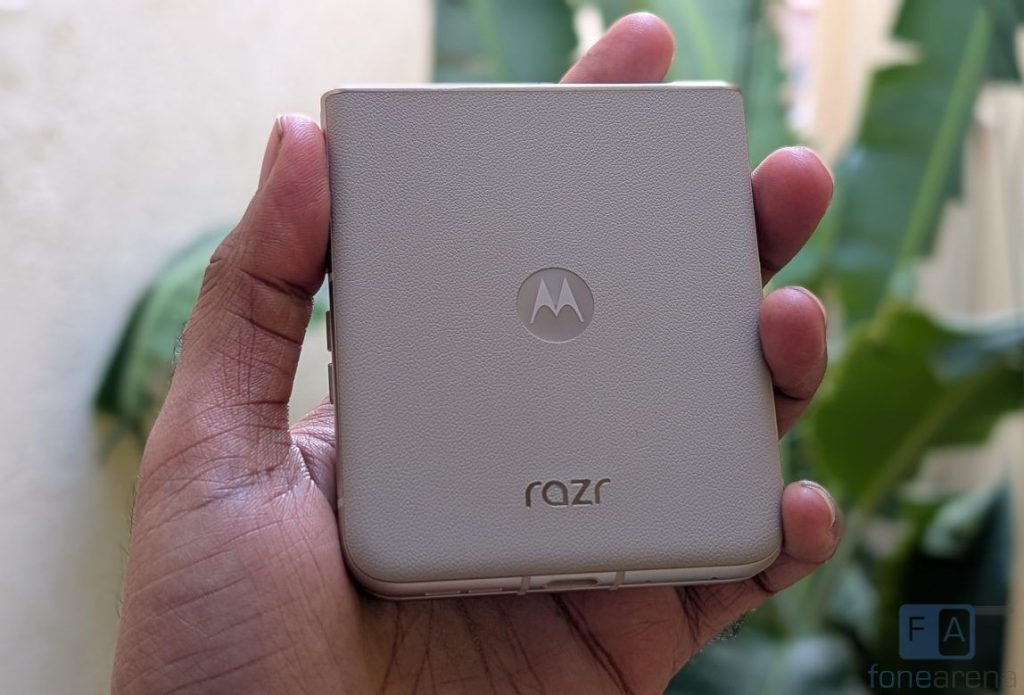
All the models of the razr 50 features a vegan leather finish. In addition to Sand Beach colour that we have, the phone also comes in Spritz Orange, Sand Beach and Koala Grey colours.
Camera
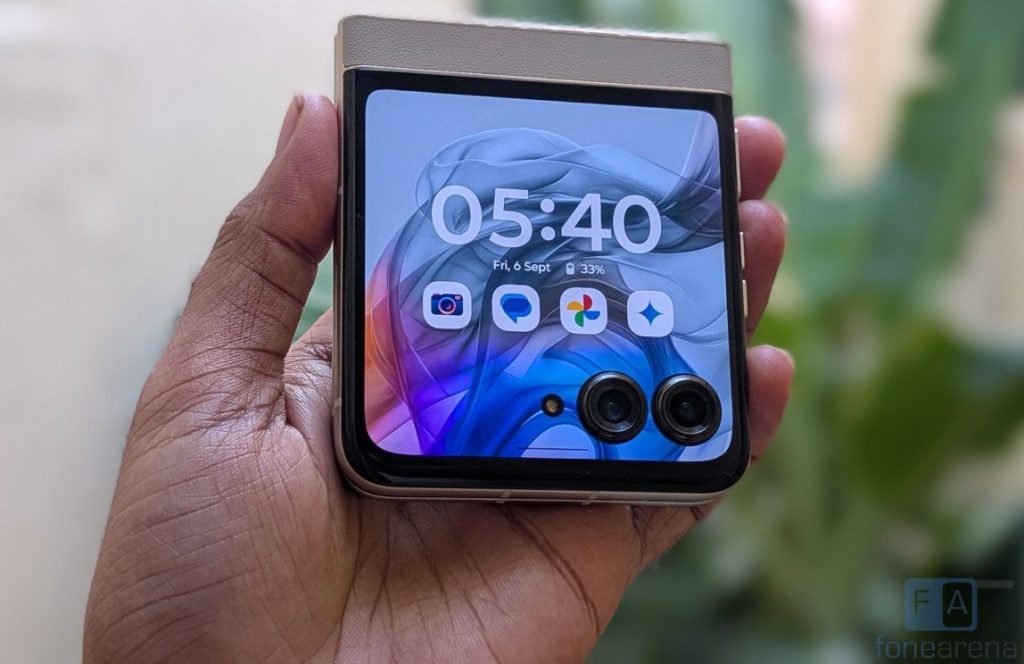
- 50MP main camera, f/1.7 aperture, OIS
- 13MP ultra-wide camera with f/2.2 aperture
- 32MP front camera with f/2.4 aperture
The camera UI is familiar with most Motorola smartphones that include a quick toggles between main camera and macro camera on the bottom, quick toggles for flash, timer, aspect ratio, and more.
Other camera features include Night Vision, Portrait, Spot Colour, Panorama, Scan, Dual Capture, Ultra -res, Photo Booth, Slow motion, Time lapse and Dual capture. There is camcorder mode that lets you use the phone in 90° so it is more stable.
Coming to the image quality, daylight shots came out well with good dynamic range, thanks to Quad Pixel technology that gives you get 12.5MP output. HDR shots are better with improved dynamic range, and it is recommended to enable auto HDR.
The 13MP ultra-wide is decent, and the macro option with the ultra-wide is good as well, since this is an autofocus camera. The edge detection in portrait shots is good as well. The 32MP front camera does a good job. You can also use the front camera to shoot
Check out the camera samples.
The razr 50 offers 4K UHD video recording at 30 fps rear or FHD at 60 fps using main, ultra-wide and front cameras. There is slow motion 120 fps at 1080p and 240 fps at 720p resolution. Stabilization is decent.
Software, UI and Apps
Coming to the software, the phone runs on Android 14 with August 2024 security patch. On the top of Android 14, it has Hello UI, which is stock with added moto features. The company has promised 3 years OS updates, and 4 years security updates for the phone.
Google Gemini can be used directly from the outer screen. razr users will also receive Gemini Advanced for 3 months with access to Google’s most capable AI models, at no extra cost. They’ll also get 2 TB of cloud storage and Gemini in their favorite Google apps like Gmail, Docs, and more—all included in the Google One AI Premium plan – worth approximately Rs. 1950/month.
As usual, it is stock with added Moto features. There is nothing to mention regarding the software in specific, since it offers stock Android 14 experience with added features. There is Smart Connect, gestures such as Quick capture, Fast flashlight, Three-finger screenshot, Sidebar, Double press power key, Press and hold power button.
Apart from the usual set of utility apps, Google apps, there are some apps such as Facebook, LinkedIn, and Spotify, but you can install them easily. It has 8GB of LPDDR4X RAM, out of which 7.45GB of RAM is free. It also has a RAM booster option to add up to 8GB of virtual RAM, and the AI auto RAM boost option is enabled by default. Out of 256GB UFS 2.2 storage, 214.5GB is usable.
Fingerprint sensor
The phone has a fingerprint sensor on the side. It immediately unlocks the phone just by keeping your finger so that you don’t have to press it, and it is obviously faster than the in-display fingerprint scanner. You can add up to 5 fingerprints. You can also use the fingerprint for app local and payments in apps. The phone also has face unlock, but it is not as secure as fingerprint.
Music Player, and Multimedia
YouTube Music is the default music player. It also has Dolby Atmos. Audio through earphones, is good as well. It has Widevine L1 support, so you can play HD content on Netflix, Amazon Prime Video and other streaming apps without any issues. HDR works for YouTube and Amazon Prime Video, but doesn’t work with Netflix.
Dual SIM and Connectivity
It has the usual set of connectivity features such as 5G with several (N1/2/3/5/7/8/20/26/28/38/40/41/66/71/77/78) bands. Jio and Airtel 5G work out of the box. It also has dual 4G VoLTE, 4G carrier aggregation or 4G+, Wi-Fi 802.11 ac (2.4 + 5GHz), Bluetooth 5.4 and GPS, A-GPS, GLONASS, GALILEO and QZSS and NFC. Since the secondary SIM is eSIM, which it between devices is not an easy task.
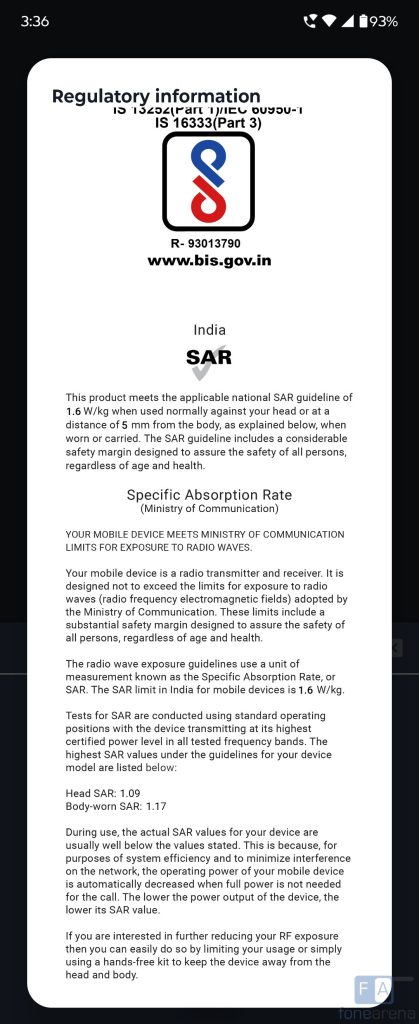
The moto razr 50’s body SAR is 1.17W/Kg, and the head SAR is at 1.09W/Kg, well under the limit in India which is 1.6 W/kg (over 1 g).
Performance and Benchmarks
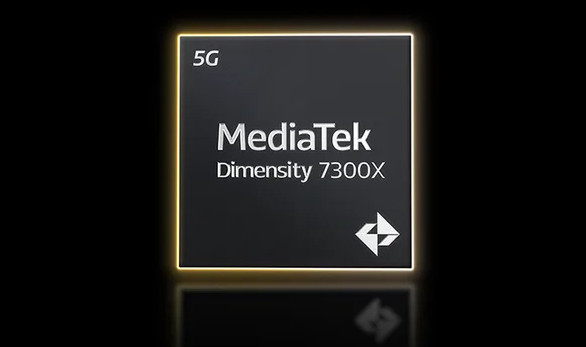
This is the first flip phone to be powered by MediaTek Dimensity 7300X SoC, which is the optimized version of the Dimensity 7300 for foldables with dual screens. Otherwise, the specifications are similar, including 4X Arm Cortex-A78 cores at up to 2.5GHz paired with 4X Arm Cortex-A55 cores. There is MediaTek NPU 655.
There is no mention of cooling. It has Arm Mali-G615 GPU and MediaTek HyperEngine for gaming. It can handle graphic-intensive games like COD, BGMI and Genshin Impact, but not in max graphics. In 3D Mark wild life stress test, it scored 98.9% which is good. The temperature increased from 30 to 33 degrees, which is not much. That said, check out some synthetic benchmark scores below.
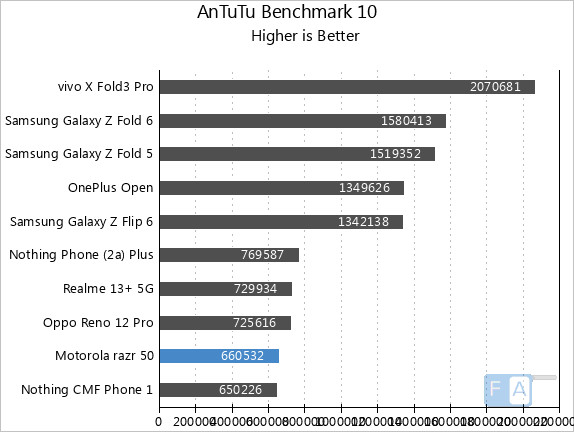
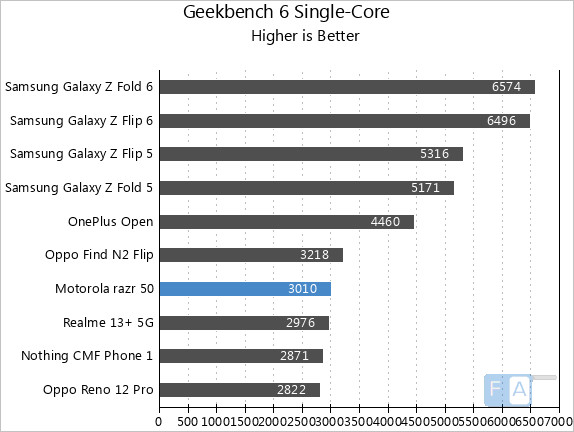

This is not a powerful SoC, so compared to other foldables the scores are less. Even compared to other phones powered by the same chip, the scores are less in AnTuTu, but it manages decent scores in Geekbench.
Battery life
Coming to the battery life, the phone packs the same, 4200mAh (typical) built-in battery as the razr 40. It lasts for a whole day with 5G and heavy multimedia use. I got over 4 and half hours of screen on time with one and half days of use with mostly on Wi-Fi, and occasional 5G use in 120Hz, which is good for the flip phone.
It still has the 33W fast charging. It takes one hour to charge the phone fully using a bundled 33W charger, and 0 to 50% takes less than 30 minutes. The razr 50 has faster 15W wireless charging compared to 5W in the razr 40. There is also reverse wireless charging.
Conclusion
Overall, the motorola razr 50 is a good upgrade to the razr 40, thanks to the improved inner and outer screens, better hinge design, even though there is not much change in the camera or the battery. Even though the SoC upgrade is decent, wish it had a faster SoC for a better gaming experience. It is a stylish flip phone with a more versatile cover screen compared to the competitors.
Alternatives
motorola’s own razr 40 Ultra with a powerful Snapdragon 8+ Gen 1 SoC is now available for under Rs. 45,000. Older Galaxy Z Flip5 in second hand is also a good alternative since the first hand units are still costly.
Pricing and availability
The motorola razr 50 is priced at Rs. 64,999 for the single 8GB + 256GB model. With all the offers, the effective price of the phone is Rs. 49,999.
It will be available from Amazon.in, Reliance Digital, Motorola.in and leading retail stores across India starting from September 20th.
Pros
- Large LTPO internal and versatile outer OLED displays
- Good build quality, IPX8 ratings
- Capable cameras
- Excellent battery life
- Clean UI experience
Cons
- Average performance
- No HDR for Netflix



